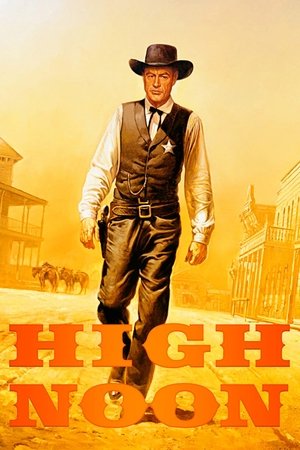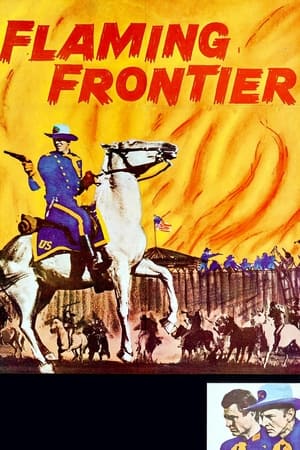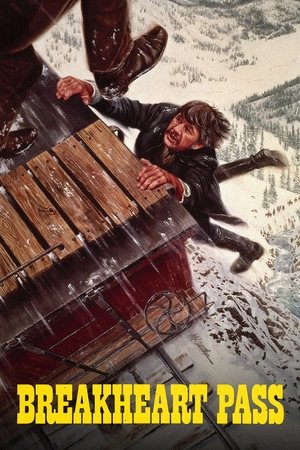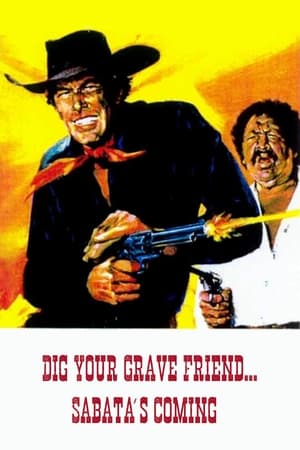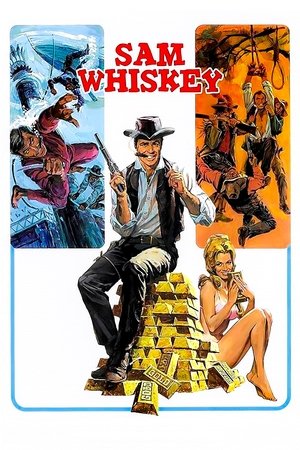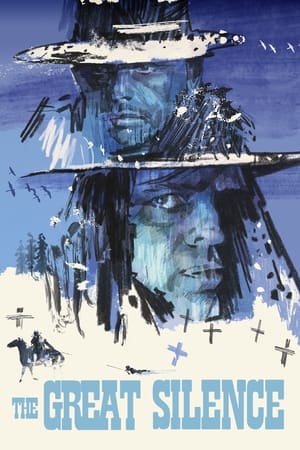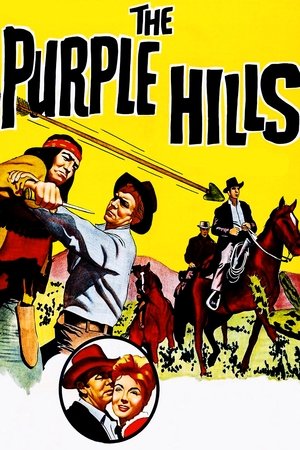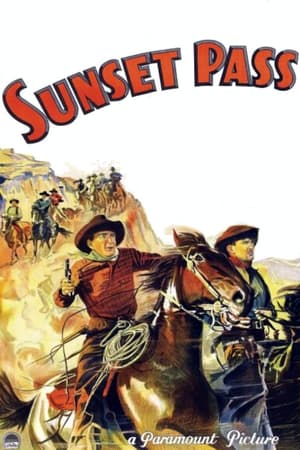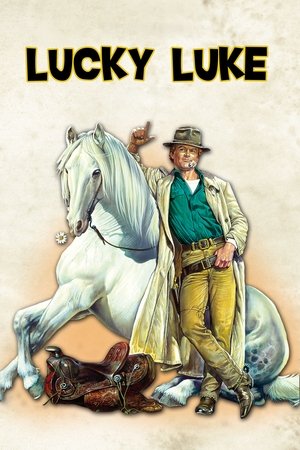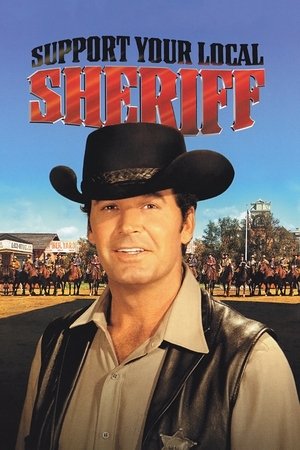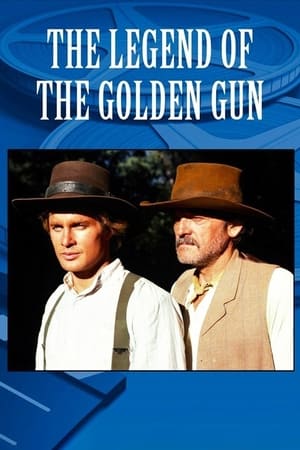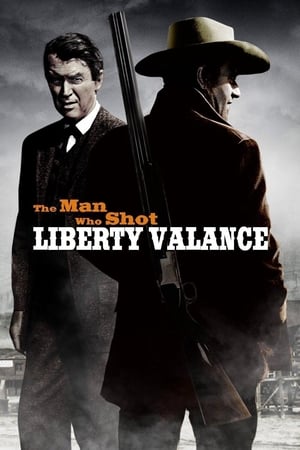Overview
While the Civil War rages on between the Union and the Confederacy, three men – a quiet loner, a ruthless hitman, and a Mexican bandit – comb the American Southwest in search of a strongbox containing $200,000 in stolen gold.
Reviews
I'm looking for the owner of that horse. He's tall, blonde, he smokes a cigar, and he's a pig!
It's debatable of course, since there are legions of fans of the first two films in Sergio Leone's Dollars Trology, but with each film there not only came a longer running time, but also a rise in quality - debatable of course!
Here for the third and final part of the trilogy, Leone adds Eli Wallach to the established pairing of Lee Van Cleef and Clint Eastwood, and brings all his tools of the trade to the party. Plot is slight, the three principals are on a collision course to find some buried gold, with each man having varying degrees of scuzziness, so how will it pan out?
Such is the genius of the narrative, it's a fascinating journey to undertake. The characterisations are ripe and considered, the various traits and peccadilloes beautifully enhanced, and with Leone being Leone, there's no shortage of cruelty and humour. He also brings his style, the close ups, long shots and some outstanding framing of characters in various situations.
The story encompasses The Civil War, which pitches our leads into "The Battle of Branston Bridge", where here we get to see just how great Leone was at constructing full on battle sequences. It's exciting, thrilling and literally dynamite, whilst Aldo Giuffrè as Captain Clinton turns in some memorable support.
The Euro locations pass muster as the Wild West, superbly photographed by Tonino Delli Colli, and then of course there is Ennio Morricone's musical compositions. It's a score that has become as iconic as Eastwood's Man With No Name, a part of pop culture for ever more. It mocks the characters at times, energises them at others, whilst always us the audience are aurally gripped.
There's obviously some daft coincidences, this is after all pasta world, and the near three hour run time could be construed as indulgent. But here's the thing, those who love The Good, The Bad and the Ugly could quite easily stand for another hour of Leone's classic. I mean, more barbed dialogue, brutal violence and fun! Great, surely!
From the sublime arcade game like opening credit sequences, to the legendary cemetery stand-off at the finale, this is a Western deserving of the high standing it is held. 9/10
Sergio Leone's The Good, the Bad, and the Ugly is a classic Western film. Clint Eastwood is the Good, aka the Man with No Name, a taciturn wanderer who follows his own sense of justice. His opposite is Angel Eyes (Lee van Cleef), the Bad, a brutal mercenary who kills anyone who stands in the way of making ready cash. The film's comic relief is Tuco (Eli Wallach), the Ugly, a Mexican bandit wanted in several states who ends up inadvertently doing some good turns. At the height of the Civil War, as Union and Confederate armies battle each other in the West, these three men vie for an abandoned cache of gold coins.
The film is especially memorable for its pace and cinematography. The opening scene, for example, juxtaposes closeups of anxious faces with vast panoramas of the Western landscape, and 10 minutes passes before a single word is said. It is like Tarkovsky transplanted to a vastly different setting. That's not to say it's all so serious, though. In a sense the film is a "two buddies on the road" movie, with Tuco the wisecracker and Eastwood's character the straight man. It is also a war film, with Leone apparently sparing no expense in presenting a realistic image of hundreds of men charging each other on the battlefield. This is not among the greatest films I've ever seen, but it's very well-made.
Because this is a "spaghetti Western", an effort in the genre realized by a joint Italian-Spanish production team with American lead actors, the film has some curious qualities. Because of the use of locals, all the faces of Civil War soldiers are so clearly Italian, even though Italian immigration into the US picked up only later. The Mexican bandit Tuco is played by a Jew from New York, and furthermore Leone mocks the character's Catholicism in a way that Americans of the era would, although the faith would be in no way foreign to his Italian audience.
I am not a fan of Sergio Leone. In fact, this movie and Once Upon a Time in the West are the only movies of his that I have seen. But I think they are both classic westerns. He seems to bring out the best in his cinematographer, both for scenery and for his characters.
In one review I read, he was criticized for staying with facial close-ups too long, and I would probably agree if he populated his movies with beautiful actors and actresses as many films do, but he relies heavily upon actors with interesting faces.
Sometimes I feel he relies on too many shootings, and on having his gunfighters be too damn good. Two, four, six opponents? Doesn’t matter, these guys kill them all and come out unscathed. But that is part of the western movie gunfighter mystique.
On a different level, I have owned the soundtrack for this movie: The Good the Bad and the Ugly, for close to 50 years. I write novels in my spare time, and I started listening to this soundtrack (plus others like Thunderball) for background music as I wrote. I moved on to Ambient music, such as Brian Eno, but still listen to this album. As a side note, I heard a great version of this movie music on YouTube, performed by the Danish National Orchestra. Check it out.
So the movie works for me on multiple levels, and I own a copy so I can watch it any time the mood strikes me
There is one word to define The Good, The Bad and The Ugly. And that word is “transcendent”. This movie is not only the pinnacle of the Spaghetti Western, but it transcended into the pinnacle of the Western genre in itself. It’s safe to say it transcends that too, and can be considered one of the greatest pieces of filmmaking ever. It counts with memorable performances by three different leads, a story that breaks the “black and white” concepts of morale, and an original score that can only be defined by the word “epic”.
Directed by the man responsible for the revitalization of the western in Italy, Sergio Leone, the film does an incredible job of introducing every character, and showing each and every one has a dubious concept of moral values. “The Bad”, Sentenza, or Angel Eyes (Lee Van Cleef), is shown to be a ruthless, greedy gun for hire, but also someone who lives by the mantra of always getting the job done. “The Ugly”, Tuco, is a greedy backstabber, but he is also a man who comes from an extremely poor environment and family conflicts, showing a bit of determinism in the film. “The Good”, Blondie (Clint Eastwood) is not much better himself. While he is surely the less greedy one, he also has no problem with killing and backstabbing other people. To put it in perspective, he is ironically announced as “The Good” right after abandoning a man to die in the desert.
The story follows all these three personalities as they engage in their particular gold rush: a buried treasure that is hidden in a cemetery. In order to find it, they must form an uneasy alliance, while trying to outrun each other, and claim the prized gold alone. All of this while the Civil War happens around them.
The performances are nothing short of amazing. It goes to show the range that Lee Van Cleef had once this villainous role is compared to his work in the previous installment of the trilogy, For a Few Dollars More, as a heroic, friendly and almost fatherly figure. His presence is as intimidating as ever, and one of the best he has given in his lengthy career. Eastwood is as eye-catching as one would expect: his deep stares and lines delivered in a whispery, yet gravelly voice, defined The Man With No Name. But the best of the bunch has to be Eli Wallach. His comedic timing is as precise as any bullet shot in this film. But the most outstanding part of his characterization is that while he is extremely funny, he also manages to be a credible threat for the “hero”, Blondie.
The original music score for this film deserves a whole book just to talk about it, and it still wouldn’t do it justice. It’s simply a lesson by the maestro, Ennio Morricone, on how music can change a film. Thanks to a track such as L’estasi dell’oro (The Ecstasy of Gold), a man running around a cemetery becomes one of the most epic scenes ever made. Thanks to a composition such as Il Triello, three men staring at each other, pondering their options for almost seven minutes straight, becomes tense enough to have the viewer on the edge of its seat. There is simply no other way to put it: Morricone crafted one of the best scores in this art’s history.
At the end of the day, The Good, The Bad and The Ugly is more than just a great western film. It’s a show of great acting, writing, directing and music scoring. It’s a real once in a lifetime classic, that has been around for a long time, and not aged a little bit, and will still be talked about for generations of cinephiles to come. To conclude, all I can say is… There are two kinds of people, my friend. Those who have watched this film, and those who have not. You watch.
Solid western, which generally isn't a favorite genre of mine, with great performances and some well shot scenes and landscapes. Been a long time since I saw A Fistful of Dollars or For a Few Dollars More, but this is a great entry in the "Man With No Name" Trilogy. **4.0/5**
Very good no doubt about it, even if I feel it's an odd fitting third installment of the Dollars trilogy.
In case this review sounds negative at any point, I wanna explicitly state for the avoidance of any doubt that 'The Good, the Bad and the Ugly' is very good! Any cons noted are relative.
I just feel like it's a drop-off from the brilliant double of 'A Fistful of Dollars' and 'For a Few Dollars More'. The near 3hr run time is one of the reasons, though the pacing is actually pretty good in fairness. I guess it's more so the plot, which is filled with an American Civil War setting which I didn't feel matched the characters.
The man in the middle/bounty hunting aspects of the original two films are perfect for the characters of Clint Eastwood & Co., whereas them tagging along for the war just felt odd; the story didn't feel as raw or volatile to me.
As stated, it's still - on its own merits - an entertaining western. Eastwood remains quality, while Lee Van Cleef and Eli Wallach are extremely worthy onscreen counterparts. I will say Van Cleef feels forgotten about, probably just by me, towards the end until he magically reappears. Still, as a trio they are really enjoyable. The plot away from the war is properly fun, much more in keeping to what I was expecting. The score is also awesome, yet again.
Minus the ACW and a shorter run time and I'd probably be classing this as great as AFOD and FAFDM. It's still very good though, which I evidently want to stress, and I'd definitely revisit it.
watched: "Extended English-language version".
Even though this version is the same as the original Italian release (177 minutes), but seemingly the US shortened run time is considered the true incarnation? Odd.
Even though this version is the same as the original Italian release (177 minutes), but seemingly the US shortened run time is considered the true incarnation? Odd.
Not as bad as the other Leone Westerns.
Still, that is not saying much at all.
At 3/10, this is better than his totally ridiculous ones.
It's still a dull movie with non credible one dimensional characters who have no motivation for a single thing they do.
Three homicidal maniacs who are called good, bad, and ugly, but really they're all just bad and ugly.
Eli Wallach steals the show. I think most people agree with me on that, and for some people he saves the show, but I need better writing, and more "credible characters in incredible circumstances" than we get with Leone.
Blondie (Eastwood) kills anyone he sees in the wild. He kills other bounty hunters to steal their prisoner to bring in for rewards.
It's a good thing we didn't have Allied soldiers like Blondie, or else all Germans would have to do to win the war would be surrender and let American GIs kill each other to steal prisoners to bring in. Imagine that. We would have lost WW2 if our soldiers were like Blondie (or Manko, or whatever his name was).
The attempts to humanize the homicidal maniacs played by Clint and Eli only work for the brain dead idiots who buy into that. Such brain dead idiots don't last long in the hood or in volatile situations. Sadists do not get human. They only act human at times to get innocent victims to lower their guard.
The three man shootout at the end is stolen from the pair of movies "The Jackal" and "Yellow Sky", and I'm not sure if it's better or not. Neither one is in a top one hundred all time movie gunfights or showdowns. It's weak and stupid.
But when the spaghetti Westerns came out, the drug abusers and potheads loved them, and demanded they be acclaimed. The critics were either scared of the druggies or were druggies themselves, because the critics were bigger hacks than Leone for praising this garbage.
How long will we endure the crack head idolization of this garbage? Probably another 30 years or so, until we get some mature viewers who are willing to make up their own minds about what is classic, instead of being sheep.
Yep, Eli spoke of sheep in another Western, but it fits here.
I give it a grade on a curb to make it 3/10, although compared to 1950s Westerns it is 1/10, but I'm lenient, because it isn't as bad as the other Leone Westerns. It isn't exactly "watchable", and you will fall asleep if you take it in one viewing, but the other Leone Westerns are even more boring than this one. Eli Wallach does do a great job, and for some people, that's enough.
**One of the best, most famous and most iconic Westerns ever. More than a classic, it's mandatory.**
I'm not an expert nor do I want to sound like one, but I think this is one of the most famous western films ever made, despite being shot by an Italian director and being more European than American. Sérgio Leone was one of the most notable directors of his time and he left us, in this film, one of his masterpieces.
This is one of those movies that is almost perfect. Problems and failures are scarce and reside in minimal details that end up not making a big difference in the overall work. The story was very well written and takes place in the midst of the American Civil War, a time when violence was part of everyday life. In this environment of violence and mutual distrust, two men are looking for a treasure buried in a cemetery: the problem is the fact that each one knows only part of the location (that is, one knows the location of the cemetery and the other knows which grave it is) and there is a third man, a fearsome assassin, willing to do anything to take all the gold.
For this film, Leone put together a very reasonable cast, mostly European, and three great North American actors with enormous talent: Clint Eastwood, Eli Wallach and Lee Van Cleef. I believe that they knew how to make the most intelligent and skilful use of this film, giving us a truly remarkable job. For this three actors, this is the best cinematographic work of their career, or one of the best, consecrating them as great Western movies actors. The film, however, seems to give Wallach more and better opportunities. While watching it, I got the feeling that he is the actor who receives most attention and best material, in addition to having known how to improvise at the right moments and in creative and intelligent ways.
The film has great visual beauty, emphasized by the cinematography, the filming work and the good choice and design of sets and costumes. At a time when the correct period recreation was something that cinema sometimes blatantly ignored, this film did the opposite, giving us a realistic and believable vision of the past and placing the film in a specific place and time. I'm not saying it was a one hundred percent successful effort, but it was definitely a decisive step in the right direction when it comes to period films. The special effects and visuals are excellent, the best there was then, and the whole film has an epic, grandiose, expensive feel. It is also very long, with almost three hours in length, but it is worth not being afraid or giving up on because of that. Being a Western film, it is quite evident that there is a lot of violence, so it is not a film for children. Even so, it is not gratuitous violence. Finally, we owe Ennio Morricone a salute for the excellent soundtrack he composed. Among his vast work, this is not my favorite nor the best, but it is undoubtedly one of the most recognizable and iconic pieces, a work that we know, even without having seen this film, and that has become part of our collective memory. We can't ask for more than that.
People tended to treat Sergio Leone's work with a considerable degree of disdain, but watching this in 2020 it is still amongst the very best of the genre. A good-looking, calculating Clint Eastwood ("The Good"), is the itinerant bounty hunter who has an uneasy partnership with a scene-stealing Eli Wallach ("The Ugly) to trick the local authorities of the reward money due for his capture before escaping and dividing the spoils. After a bit of duplicity that rather erodes what little trust there ever was between them - and some very timely cannon fire - they happen upon a recently robbed stagecoach where they learn of the whereabouts of a huge stash of gold - but they both possess different clues as to the location, so must - despite themselves - work together to track down the loot. Meantime, a thoroughly nasty Lee Van Cleef (“The Bad") hears about their treasure hunt and is now joined in the race to the money. There is a paucity of dialogue that only enhances their performances - there are bouts of humour and although the premiss is pretty violent, there is actually very little by way of grisly, gory, depiction seen on screen. The scene near the end in the graveyard with the magnificent Morricone "Ecstacy of Gold" theme is as good as Westerns get. The editing is not great, it has to be said - but the cinematography gives a great showcase to the scale and grandeur of the locations. Not a word I use often, but this really is a masterpiece of the cinema.
When you have to shoot, shoot. Don’t talk. 70% (ish)
This is the third in a so-called ‘trilogy’, a framing which I expressed doubts about in my review for the second in the sequence, “For a few dollars more”. So, from my perspective it’s a matter of complete indifference as to how many in this ‘trilogy’ you see and in what order you watch them. That being said, if you watch all three films you will observe the tropes that are common to this ‘trilogy’. In this one the plot concerns three men on the make who end up chasing a fortune in gold during the American Civil War (American history is not my forte, so looking at Wikipedia for the span of this war, I’d guess that it takes place towards the tail end of it, in the mid 1860s). The three men on the make are referred to in the film’s title. Skim reading Wikipedia’s entry for this film, there is an interesting thing to note about the title: “In the theatrical trailer, Angel Eyes is referred to as The Ugly and Tuco, The Bad. This is due to a translation error; the original Italian title translates to "The Good [one], the Ugly [one], the Bad [one]"”. That quote misses ‘the good one’, which, in this case, is Clint Eastwood’s character of ‘Blondie’. I’m using scare quotes for his name because it’s a nickname and also a trope of this trilogy, in that he always plays a character whose name we aren’t sure of, whether we think we know it or not. Lee Van Cleef plays ‘the ugly one’ and Eli Wallach plays ‘the bad one’.
“The good, the bad and the ugly” returns to the opening title style of the first film, “A fistful of dollars”, initially, at least. Here you’ll get Ennio Morricone’s famous composition which is, musically, at least, his most accomplished, as in you’d want to get the soundtrack for this film because it is so good as a piece of music (it’s an earworm!). His score for the previous film worked better as a soundtrack for a film, as in it heightened tension or what have you. When Eastwood’s character is revealed (or at least the back of his head, while he is smoking), that famous score plays. That seemed to tie it to him but it would later repeat for the character of Tuco. I’m not sure what we are meant to glean from the fact that the phrase “Directed by Sergio Leone” is in three different fonts! The opening titles have a letterbox aspect which is dropped for the rest of the film, as was the case with the earlier films.
Back to the tropes of this film, there is the visual style of Eastwood. It looked as though his stylistic trope of wearing a poncho would not occur in this film but it did towards the end. As I noted for Eastwood’s character in the previous film, I would say the same thing about Lee Van Cleef’s character for this one: he’s not the same person in both films. Once again you eventually get something resembling a visual trope for him, after thinking it wouldn’t occur: his pipe smoking. Lastly, going on the two previous films, you would expect there to be a main villain of the piece. Maybe I thought it was (or might be) Gian Maria Volonté but he is ‘replaced’ by Eli Wallach. Wikipedia does mention that Volonté was considered for the role but Leone wanted to cast someone who could add a different dimension to the character. Having him in all three films would have made for interesting processing of what this kind of casting means for the trilogy. In any case, perhaps it’s a nice symmetry with Eastwood being the constant and Volonté and Van Cleef being either side of the trilogy for two films.
Some of the dialogue in this film did catch my attention, as it did in the first film. Both of these films would make good material for a high school subject like history or media studies or what have you. Amongst the meaty dialogue in this film are lines like: (an official reading the charges against a condemned man) “raping a virgin of the white race; statutory rape of a minor of the black race”; a business man speaks of the Confederates: “as soon as these cowards hear a blue shirt is around, they run. These rebels have no will to fight. They’ll soon be finished. We get rid of these bastards, then we begin making money on those Yankees. They carry gold, not paper dollars and they’re going to defeat the South”; a Confederate sergeant says: “the only thing we care about is saving our own hides”.
In my reviews I’ve noted the sense of humour of Eastwood’s characters. In the first film it is playful. In the second it is guarded (maybe I should have used that word there!). Here it is cruel (in an early scene). This is just another demonstration to me that Eastwood is not playing the same character in all three films. Of all the three films, Eastwood’s character is the most unpleasant here, which makes his designation as “the good” (in a postmodern fashion by Leone, using on-screen text) as seemingly ironic. When he calls Tuco a “greasy rat”, it makes me wonder if there is an ethnic dimension to the choice of villains in all three films. That might be a meta observation of the trilogy by me though. Some of the humour isn’t intended as cruel though. For instance, there is a funny scene where ‘Blondie’ and Tuco wonder what side of the civil war an approaching cavalry is on. Another scene with Tuco, in a prison camp, brought to mind a scene in the film Pretty Woman, which was played for laughs. ‘Blondie’ is definitely a dodgy character and his scheme at the start of the film is novel (to me) although I do wonder about continuity errors as far as his partner in crime goes. Their seemingly first meeting doesn’t really square with what happens later. How Blondie is seen to become partners in crime with this person also illustrates how odious his character is.
Another major aspect of this film is its depiction of war. It made me question whether it was being used a prop. Is what the film saying about war merely glib? War isn’t glorified here in any case. Perhaps it’s not odd that I found some scenes of war being taken to a town had echoes in what is currently happening around the world. The makeup used to depict war injuries strikes me as having a realistic look to it. In a more oblique manner, I did note the use of targets in a shooting range looking like Native Americans. It’s such a throwaway moment but it struck me, as did similar moments in the first film, concerning Native Americans.
Of the three films in this ‘trilogy’, this is the one that I’m scoring the lowest. All of the films had their moments which strained credulity or buggered belief. It’s just that for this one, it really went beyond pushing the envelope for me. Even though Eastwood’s character’s entrance into the final showdown of the first film was unbelievable, I still found it satisfying for its mythic quality. This unbelievability just increases from film to film in an unsatisfying way. One example of that is the depiction of the captain at Branson Bridge. His behaviour just didn’t seem grounded in reality. I’m not including the fact that he looks swarthy, as do most of the soldiers on the Confederate side, for some reason. It was filmed in Europe, especially Spain, so I won’t hold that against them. Generally speaking, I just didn’t find the main characters believable in how they related to one another, given their history. As a side note, this film had a non-linear feel to it but I suppose that the ugly one’s search for Carson is a thread.
Of the ‘trilogy’, I’d say that the first is the one that I’d most likely revisit again sometime. The second one, maybe, after a long absence. The third film is much longer but it’s not for that reason that it doesn’t feel to me like something that I’d be interested in revisiting, although it does have its moments. My thoughts on what I should score this range from 75% (no + sign meaning I give it 7 out of 10 stars on a site where you can’t give half stars) to maybe 67.5% if I’m feeling unaccommodating. 72.5% or 72.5+% isn’t unreasonable but maybe I’ll just stick to what this site gives me, 7 out 10 stars?
Random notes:
^ I viewed the “Extended English language version” which had a “2003 restoration and remastering”. Recorded on 11/10/2024. SBS World Movies, 9:55pm. Running time of 2:51:15 without the six lots of ads during the film (measured from the start of the MGM lion’s roar to to the end, being after the trademark still of the lion, which, for the first time, didn’t have a lion’s roar), which brings the running time up to 3:11:51. I must say that I appreciated the fact that SBS didn’t play ads during the lead up to the ending (the last ad ended 2:26:04 on the unedited film). Audio Described and Closed Captions. It was rated M for adult themes and violence. I viewed this film over two days, from 23/11/2024 and made these notes. I started writing this review on 07/12/2024 up to here and a bit more. Another first for this trilogy is the inclusion of end credits.
^ The option for Closed Captions was appreciated by me but I still found an online site with the script to refer to at times. SBS’ captions (I presume it was theirs) were good. For instance, whilst the online site didn’t include Spanish utterances, SBS’ did and I got a strong language translation when I typed it into a translation app on my PC. Sometimes the online script had words which the CC didn’t. Sometimes the online script had the right word and the CC didn’t.
^ Once again, I hear what sort of sounds like words in Morricone’s score, in this case “Go, go, go, echo”. He has actually composed music which features lyrics for this film: “The story of a soldier” and those lyrics were written by Tommie Connor.
^ Not sure if Tuco’s sign of the cross is correct...which might be the point, perhaps.
^ Interesting casting for the first character we come across called “Shorty”. I wonder what his story was. Wikipedia doesn’t answer that question but interestingly I see that he is yet another actor who has appeared elsewhere in this trilogy...and you’d think that I would have definitely remembered seeing him before!
^ Lee Van Cleef seems to have at least one thing in common with Dave Allen...part of his finger is missing!
Anyway, it’s interesting that the film delays returning actor’s props from the previous films in the trilogy: Eastwood starts out wearing a trench coat in this film before taking a poncho at the end (by the way, I liked the cinematography of that scene at the cemetery with Tuco) and Van Cleef is only later seen with a smoking pipe. This review submitted late 11/12/2024, AEST.
P.S. Having now looked at the ponchos in all three films, it looks to me that they are the same. Now, maybe this style of poncho was ten a penny back in the day but it seems to me that this stylistic thread between all three films...and I'm not sure what it's meant to signify...because I'm not treating all the characters that Clint Eastwood plays as being the same person.

 161 min
161 min
 8.464
8.464
 1966
1966
 USA
USA
 John Chard wrote:
John Chard wrote: